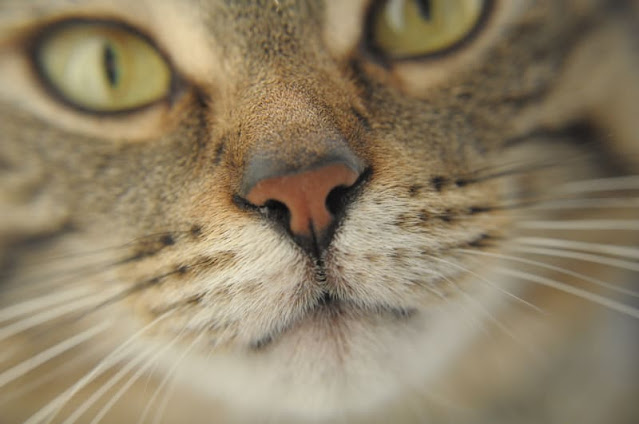my cat caught cat flu at the cattery
Cat flu symptoms
One of the most concerning things for a cat owner is when their beloved feline catches an illness. Cat flu, also known as feline upper respiratory infection (URI), is a common condition that affects cats of all ages and breeds. It is important to be aware of the symptoms of cat flu in order to provide the necessary care and treatment for your furry friend.
Feline upper respiratory infection
Cat flu is a viral infection that affects the respiratory system of cats. It is similar to the human cold or flu and is caused by various viruses such as feline herpesvirus and feline calicivirus. Cats can catch this contagious disease through direct contact with infected cats, sharing food and water bowls, or even through airborne transmission.
The symptoms of feline upper respiratory infection can vary from mild to severe and may include:
- Sneezing
- Coughing
- Nasal discharge
- Conjunctivitis (inflammation of the eyes)
- Fever
- Loss of appetite
- Lethargy
Contagious cat diseases
Cat flu is one of the many contagious diseases that can affect cats. Other common contagious cat diseases include:
- FeLV (Feline Leukemia Virus)
- FIV (Feline Immunodeficiency Virus)
- Rabies
- Panleukopenia (Feline Distemper)
- Feline Infectious Peritonitis (FIP)
It is important to ensure that your cat is up to date on their vaccinations to protect them from these diseases. Regular check-ups with your veterinarian can help detect any potential health issues early on.
Feline calicivirus prevention
Feline calicivirus is one of the viruses that can cause cat flu. It is highly contagious and can spread rapidly in multi-cat households or environments such as catteries. Vaccination is the most effective way to prevent feline calicivirus infection. Kittens should receive their initial vaccination series, followed by booster shots to maintain immunity. It is also important to practice good hygiene, such as regularly cleaning food and water bowls, and keeping litter boxes clean and sanitized.
Cat flu in multi-cat households
Cat flu can be particularly problematic in multi-cat households or environments such as catteries. The close proximity between cats increases the risk of spreading the infection. If one cat in the household gets cat flu, it is important to isolate them from the other cats to prevent further transmission. Providing separate food and water bowls, as well as litter boxes, can help reduce the spread of the virus.
Cat flu prevention
Preventing cat flu involves a combination of vaccination and good hygiene practices. Vaccination can significantly reduce the risk of your cat getting infected with the viruses that cause cat flu, including feline herpesvirus and feline calicivirus.
In addition to vaccination, practicing good hygiene is essential in preventing the spread of cat flu. This includes regularly cleaning and disinfecting food and water bowls, litter boxes, and bedding. Washing your hands before and after handling cats, especially if they have been in contact with other cats, can also help prevent the transmission of the virus.
Feline viral infections
Cat flu is just one of the many viral infections that can affect cats. Other common feline viral infections include:
- Feline leukemia
- Feline immunodeficiency virus (FIV)
- Feline infectious peritonitis (FIP)
- Feline panleukopenia
- Rabies
It is important to be aware of these viral infections and take the necessary preventive measures to protect your cat’s health.
Cat flu diagnosis
If you suspect that your cat has cat flu, it is important to consult with your veterinarian for a proper diagnosis. The vet may perform a physical examination and run tests to confirm the presence of the virus. These tests may include blood tests, swabs of the nasal or eye discharge, or PCR tests to detect the specific virus causing the infection.
My cat caught cat flu at the cattery
If your cat caught cat flu at a cattery, it can be a distressing situation. Catteries are environments where cats come into close contact with each other, increasing the risk of disease transmission. Here are some steps you can take if your cat caught cat flu at the cattery:
- Isolate the infected cat: Keep the infected cat separate from other cats in your household to prevent further spread of the virus.
- Consult with your veterinarian: Seek veterinary advice to ensure that your cat receives the appropriate treatment and care.
- Follow the vet’s instructions: Administer any prescribed medications, such as antiviral or antibiotic drugs, as instructed by your veterinarian.
- Provide comfort and support: Create a comfortable and quiet space for your cat to rest and recover. Ensure they have access to fresh water and food, and monitor their condition closely.
- Practice good hygiene: Wash your hands thoroughly before and after handling your cat. Clean and disinfect any items that come into contact with the infected cat to prevent the spread of the virus.
Remember, cat flu is a common condition, and with proper care and treatment, most cats make a full recovery. However, in some cases, complications may arise, especially in kittens, older cats, or cats with weakened immune systems. Regular vaccinations and good hygiene practices can help prevent the occurrence of cat flu and protect the overall health and well-being of your feline companions.













